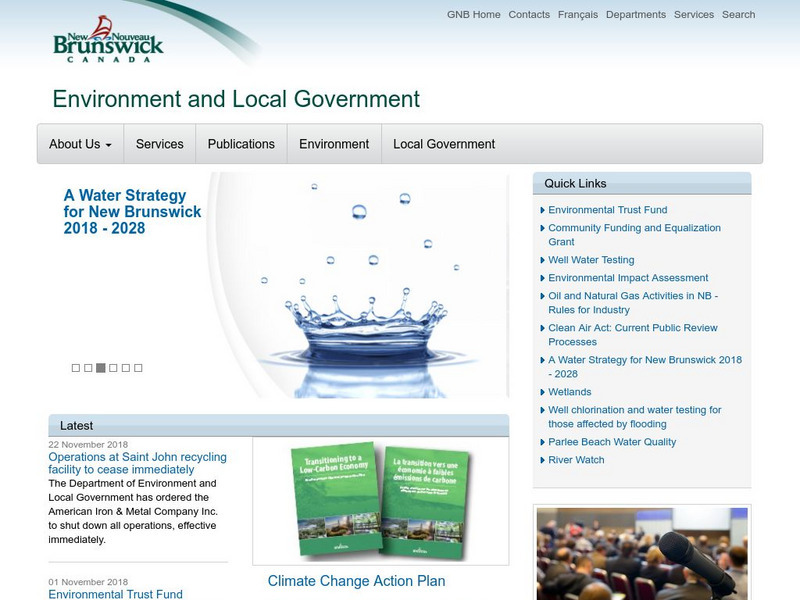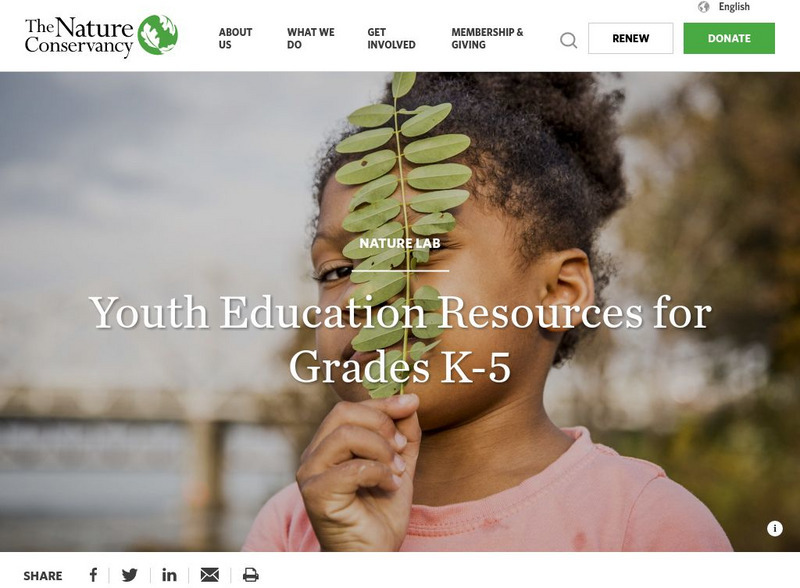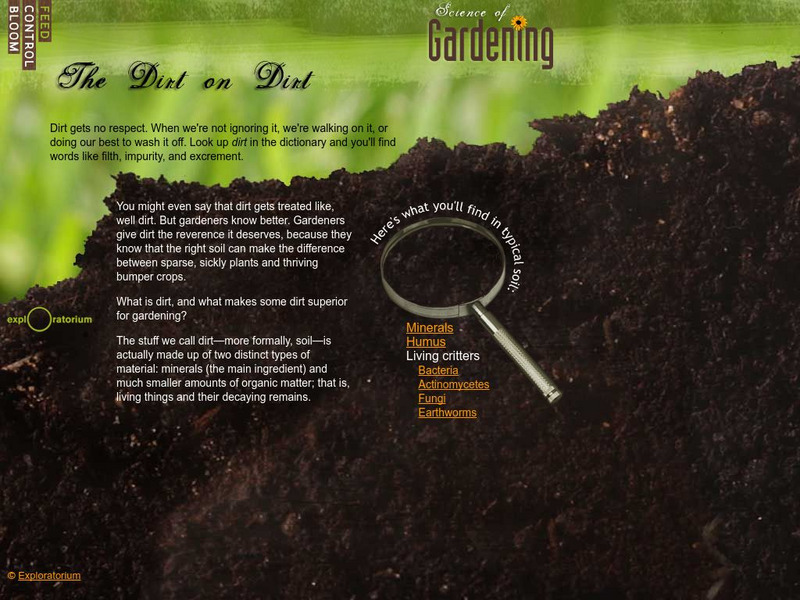Curated OER
Food Chains And Webs
Students investigate the concept of soil and all its components. They collect samples from a local site and transplant it into a terrarium. Students identify the organic elements, clay ,silt, and other forms of debris. They also identify...
Curated OER
Soil In The Amazon
Students grow plants in soil representing that found in the Amazon basin. They compare results to plants growing in fertile soil and soil fertilized with leaf compost. Students chart, average and graph plant growth by height.
Students...
Curated OER
Vermiculture Food Waste Compost Program for Touchstone School
Students explore the advantages of composting. In this recycling lesson students complete a worm compost project and collect food waste to feed them.
Curated OER
Fourth Grade Science Quiz
In this science instructional activity, 4th graders take a multiple choice quiz about the weather, moon, electricity, and more. Students complete 15 questions total.
Curated OER
What type of soil do worms like?- An Investigation
Students study four types of soil and predict which one worms would use for their habitat. They observe worms in each type of soil and monitor their activity. They create class charts highlighting their discoveries.
Curated OER
Growing With Compost
Students discuss the positives and negatives of composting. They plant their own plant using composting material and record results. They create a poster for the classroom.
Curated OER
Dirt Alert
Students explore the environment and effects of pollution. They participate in a "Dirt Alert" scavenger game to study vocabulary words. Students construct a soil simulator to visually illustrate the negative effects on the environment of...
Curated OER
Teaching about Rain Storms, Land Use, and Lake Turbidity
Students investigate the impacts of major rainfall and subsequent runoff on turbidity in lakes. They, in groups, develop a presentation of their research and/or write a paper summarizing their investigation.
Curated OER
Get the Dirt
Students investigate a variety of soil samples placed in cold water jars. Layers of soil are examined for the difference between organic matter and rock fragments.
Curated OER
A Recipe for Soil
Fourth graders use local materials such as leaves and other plant matter; sand and pebbles to make soil. They plant seeds in the manufactured soil and in natural soil and then observe and record the results.
Curated OER
Soil Research
Third graders work together in groups to discover the importance of soils. Using a worksheet, they answer questions as they surf the internet. They observe three different types of soils and record their observations and use the internet...
Curated OER
Investigating Soil
Fourth graders swap local soil samples with another school and examine the differences. They research soil properties, identify organisms that live in soil, create and maintain a biome of soil decomposition and design a poster to present...
Curated OER
De"compost"ition Activity
Students investigate the decomposition process and the parameters which influence the rate at which it occurs. They design a "controlled" experiment by comparing decomposition rates between two compost piles. Analysis questions include...
Curated OER
Helping the Soil
For this soil conservation worksheet, students study and analyze two excellent ways to enhance soil conservation: compost heap and leaf-mould. Students review all the ingredients in making both.
Curated OER
Explorit's Garden Quiz: How Does Your Garden Grow?
In this plants learning exercise, students complete a 6 question multiple choice quiz about gardening, plants and agriculture. This is an online interactive learning exercise.
Utah Education Network
Uen: Sand, Clay and Humus
Fourth graders study the differences between humus, sand, and clay soil.
Other
New Brunswick Waste Management /"Backyard Magic"
Comprehensive description of the environmental benefits of composting solid waste. Complete directions for composting, detailed description of composting chemistry, suggestions for applications of humus, question and answer page,...
Other
Composting Practices (Pdf) [Pdf]
This publication explains the agricultural and environmental benefits of composting household waste. It explains the difference between hot and cool composting systems. It also documents research indicating turfgrass benefits from humus...
Nature Conservancy
The Nature Conservancy: Gardens Activity Guide: Soil
For this lesson students conduct a soil analysis to understand soil types and explore the relationship between the garden and healthy, fertile soil. Soil is a natural resource that is crucial to life on Earth and when managed properly,...
Discovery Education
Discovery Education: The Dirt on Soil
This interactive website explores the various soil layers and introduces you to the lifeforms that live in those soil layers.
Texas A&M University
Texas A&m University: Composting for Kids
Slide show with script from the Texas A&M University describing how to layer a compost bin, and how to make a trench compost or pocket compost. Gives nitrogen and carbon content examples of compostable materials. Explains gardening...
Exploratorium
Exploratorium: The Dirt on Dirt
What is dirt, and what makes some dirt superior for gardening? Find out in this virtual soil exploration.
Science Education Resource Center at Carleton College
Serc: Habitat Part 2
This activity is designed for students to examine soil and determine which soil will be the best for plant growth. The students will also investigate the effect of sunlight on plants and the importance of sunlight in producing chlorophyll.
Science Education Resource Center at Carleton College
Serc: Investigating Soil Composition Soil Soaks Up Water
In this classroom activity, young scholars will show how soil composition affects the amount of water the soil holds. They will test sand and soil independently and then create their own mixture.
Other popular searches
- Sand, Clay and Humus
- Sand Clay and Humus
- Components of Humus
- Define Humus
- Humus Worms
- Humus Planet
- Humus Components
- Humus Planet Draw





















